What is a sousaphone? The sousaphone is basically a tuba. They are both large brass instruments, but the sousaphone is an evolution of the tuba. The biggest difference is that it is easier to march with. This is because you can hold and balance it for longer.
The instrument is recognizable by its distinctive shape that allows the player to stand through the middle of the horn.
Sousaphones have similar musical range and tube length as tubas (at standard pitch). The first sousaphones were made in 1893 by instrument maker J. W. Pepper in Philadelphia, USA.
Why is it called a sousaphone?
But if it is a tuba, then why is it called a sousaphone? It is named after John Sousa, who imagined it as a replacement for the large tuba and the helicon (neither of which are practical to use in a marching band).

What is the difference between a tuba and a sousaphone?
Both brass instruments are played by buzzing the lips inside a mouthpiece to get the desired pitch, while pressing valves to get the desired note. However, here is a list of most of the differences:
- They come in different keys:
- Tubas: BB♭, CC, EE♭, and F keys
- Sousaphone: BB♭ (Low B Flat) keys
- Tubas have less restricted range (Sousaphones have a relatively more restricted range).
- Number of valves
- With tubas, the bell-shaped does not reach the musician’s head. However, sousaphones it is above the musician’s head, which is its most visually distinctive feature – which sits naturally on the right shoulder of the player and faces forward (as opposed to a tuba’s bell which faces upward).
- A tuba does not rest on the musician’s body. However, a sousaphone is supported by the left shoulder of the musician. A sousaphone is more easily handled and therefore can be played while walking or marching.
- They have different uses cases: tubas are mostly used in pop bands, orchestras, jazz, bands, brass ensembles, etc. However, sousaphones are mostly used in marching bands. It is difficult to play the tuba standing up, and difficult to play the sousaphone when sitting down.
Differences between Tubas and Sousaphones
| Tuba | Sousaphone | |
| Keys | BB♭, CC, EE♭, and F keys | BB♭ (Low B Flat) key |
| Playing Position | Played while sitting | Played while standing, walking, or marching. |
| Range | Less restricted range | More restricted range |
| Valves | 4 to 6 | 3 |
| Can be played | While sitting | While walking and marching |
| Design | Does not encircle the musician’s body | Fits around the musician’s body and is supported by the shoulder |
| Use | Pop bands, orchestras, concert bands, jazz bands, wind bands, brass ensembles | Marching bands and troupes |
Pitch: Valves, either rotary or piston, are operated by the player to reach specific notes in combination with the mouthpiece. Both tubas and sousaphones are available in multiple different pitches, most commonly BB, EE, CC, and F.
- Sousaphones mostly come in the BB♭(Low B Flat) key. The tubas, on the other hand, come in BB♭, CC, EE♭, and F keys. The sousaphone has a more restricted range as compared to their counterpart concert tubas. And instead of having 4 valves, they only have 3 valves for weight reduction.
- Tubas come in different pitches. The contrabass tubas, for example, are the lowest-pitched tubas. They are pitched in B♭ or C. They are also called BB♭or CC tubas. The CC tubas have a fundamental pitch of 32 Hz, while the BB♭ tubas have a fundamental pitch of 29Hz. There are also the euphonium or tenor tubas to round out the tuba family.
Shape: The sousaphone comes with a bell that you can position right above your head when you play this instrument. The sousaphone’s design allows it to comfortably fit over the body of the player.
Size: The sousaphone comes with a large bore, which can be around 0.750 inches. It also features a large bell with a diameter that can be as large as 32-in. The tuba, on the other hand, comes with varied lengths (18 feet, 16 feet, 13 feet, and 12 feet).
A sousaphone is designed to be played while standing. The brass tubing is wrapped around the players body in such a way that makes sitting virtually impossible, and the forward-facing bell would easily allow the low sound to get lost among all the higher-pitched instruments.
How much does a sousaphone cost?
Sousaphones are typically priced between $4,000 and $10,000 new.

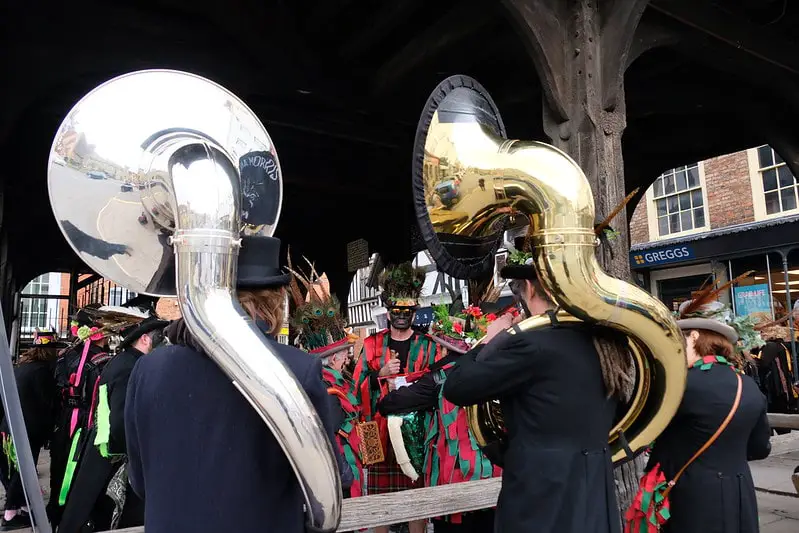

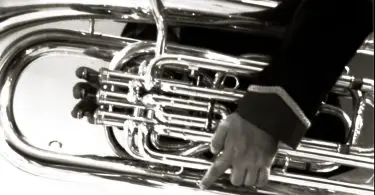
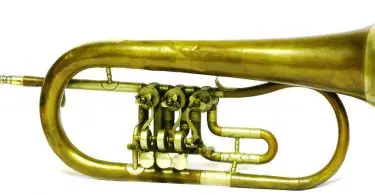
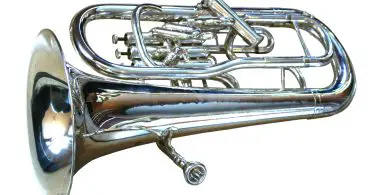

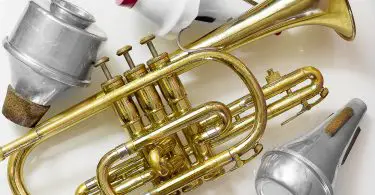
Start the discussion at talk.hearthemusicplay.com